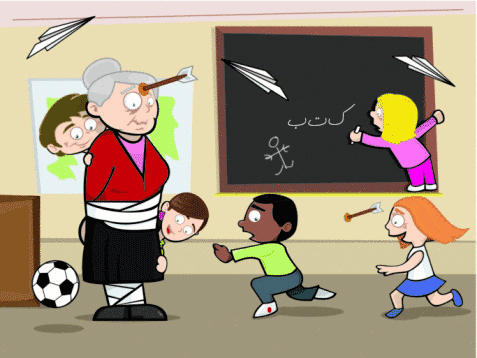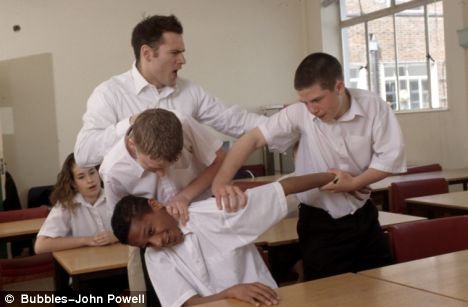Steemit creating a better classroom experience
Teaching Diversity In The Classroom
I found this very useful so I thought I would share it.

To assist faculty and teaching fellows seeking to enhance learning for all students, we have put together this Tip Sheet, in the hope that it will empower teachers to create the conditions under which diversity can flourish.
Educate yourself -- become as sensitive as you can to racial, ethnic, and cultural groups other than your own.
At the same time:
Never make assumptions about an individual based on the racial, ethnic, or cultural groups to which he or she appears to belong. Treat each student first and foremost as an individual. Get to know each student individually.
When teaching in a multicultural context, we suggest that they prepare themselves in several ways:

• Plan the course with the multicultural classroom in mind by considering syllabi, course assignments, examples, stories, and potential classroom dynamics.
• Find ways to make the actual classroom open and safe for all students, and to make the material accessible to all students.
• Learn how to intervene tactfully and effectively in racially charged classroom situations and to manage hot moments or hot topics.
• Assess conscious and unconscious biases about people of cultures other than your own.
Develop your SOW that explores multiple perspectives on the topic.
• Incorporate multicultural examples, materials, and visual aids as much as possible in lectures.
• Make sure that the expectations for the pedagogical process and learning outcomes are stated clearly on the SOW.
• Structure project groups, panels, laboratory teams, and the like so that membership and leadership roles are balanced across ethnic and gender groups.
• Develop paper topics that encourage students to explore different racial and cultural perspectives.
Design classroom instruction and materials with a diverse group of students in mind.

• Develop ground rules or norms that will guide how students are expected to interact with each other in the classroom.
• Design classes with a clear structure (there is a method and meaning to how teaching and learning is to occur) and flexibility (not so rigid that adjustments cannot be made).
• Consider how all students would experience the SOW.
• Consider whether students of all cultures are likely to have a background in the material.
• Consider whether different approaches to learning are accounted for.
• Anticipate sensitive areas in the subject matter being taught.
• Think in advance about how one might handle sensitive topics or explosive moments.
Create opportunities to get to know your students on an individual/personal basis.
• Get to know each student individually. Learn their names and how to pronounce them correctly.
• Use eye contact with all students; be open and friendly outside of class.
• Be accessible and encourage students to meet with you during office hours.
• Interact with your students in respectful, challenging, and collaborative ways.
Design opportunities for students to interact with each other in respectful and meaningful ways.
• Divide the class into smaller groups, and when appropriate, assign one person with the responsibility of reporting on the small group's work.
• Encourage students to form study groups.
• Create opportunities for students to present their work to each other and the whole class.
Activate student voices
• Create opportunities for mutual teacher-student participation so that everyone feels a responsibility and openness to contribute.
• When appropriate, encourage students to share their thoughts about the subject, acknowledging their statements as they are made.
• When appropriate, create opportunities for students to personalize course content with examples from their own history so that they can make connections between ideas learned in the classroom and those learned through life experiences.
• Let students know from the very beginning that their thoughts have a place in the classroom, that we all have unique perspectives, and that these different perspectives are an important component of the learning process.
• Make it safe for everyone to voice their views by accepting all views as worthy of consideration. Don't permit scapegoating of any student or any view. Don't leave students alone out on a limb.
• Avoid creating situations where students are placed in the position of being representatives of their race.
Generate a challenging but vibrant learning process that encourages students to develop their creative, critical, and analytical thinking skills.
• Make the classroom norms explicit.
• Keep expectations high and provide the support required to meet these expectations.
• Ask students to locate cultural or even discriminatory content in textbooks or other materials.
• Ask students to research the position they are least comfortable with and to come prepared to articulate a defense of that posture.
• Present all sides of an issue. Play the devil's advocate for the least popular view
• Create opportunities for students to link theory with practice -- that is, encourage them to apply what they are learning with what's going on in the world.
• Use multiples modes of instruction to account for the range of learning styles that may be present in a diverse group of students.
• Provide direct and clear feedback in an effort to demonstrate your commitment to your students' learning.
Devise personal strategies in advance for managing yourself and the class in such moments.
• Know your own hot buttons/biases and what will make your mind stop working.
• Try to anticipate what topics may be explosive and design pedagogical strategies (e.g. small groups, free writes, and reflection responses) that may assist in managing sensitive topics.
• Establish clear classroom norms at the beginning of the class.
Interrupt blatantly racist and discriminatory behaviors when they emerge in class.
• Trust your instincts. If you think someone is engaging in discriminatory behavior then you might be right. Don't let potentially harmful behavior go unaddressed -- your students may take your silence as an unofficial endorsement.
• Don't let students attack other students in personal terms; get them off the personal and onto the issue at stake.
• Try not to let yourself be rattled by the event; or at least, try not to let it look as if you are rattled. If you as the teacher can hold yourself steady, you will create a holding environment in which people can work out the issues that have arisen.
• Don't let yourself get caught up in a personal reaction to the individual who has made some unpleasant remark.
• Protect the lone outlier (the attacked or attacker), regardless of his or her position.
Defuse potentially harmful moments by having students step back and reflect on the situation.

• Stop the class and ask students to write a reflection response on the incident. This enables students to think about and come to some kind of terms with the issue and can enable further discussion of it.
• Defer. Tell students that this is an important issue and that you will take it up later in this class or next time. Use the time to think and plan a strategy. Make sure you return to the issue later as promised.
• Go around the room and ask each student who has spoken (and others if they wish) to state his or her view and explain the view behind it. Do not permit interruptions and acknowledge each student's comments, no matter how you feel about it personally.
• If a student breaks down as a result of the original outburst, acknowledge it and ask the student if he/she would like to remain in the classroom or take a break to pull him- or herself together.
Turn potentially hot moments into powerful learning experiences.

• Use the disruption as an opportunity to analyze the issue under discussion or the initial event.
• Find the part in the hot moment that can be used for further discussion.
• Ask students to step back and see how they might make something positive of this exchange, what they can learn from it.
• Ask students to think about how their reactions mirror the subject at hand, and what they might learn about the subject from their own behavior or experience.
• Use the passion as a vehicle to talk about differences in kinds and levels of discourse.
• Use the passion and arguments to look at how group dynamics work -- who speaks and who does not, who allies him or herself with whom, who plays what role -- and to think about how the group wants to work.
Nice @teachbtec
Shot you an Upvote :)
You have included some great information. However, I have to show my ignorance and ask what an SOW is. I am a first year teacher and don't know that I have came across that acronym yet, though there are so many I might have and just forgot to be honest.
Also, something I might add that many may not think of is to be aware of words that are actually derogatory and may not seem so, as well as being cautious or avoid altogether using colloquialisms and sarcasm in the classroom. You touched on those when you mentioned becoming educated and making the classroom open and safe for all, but I thought specifically those might helpful for others.